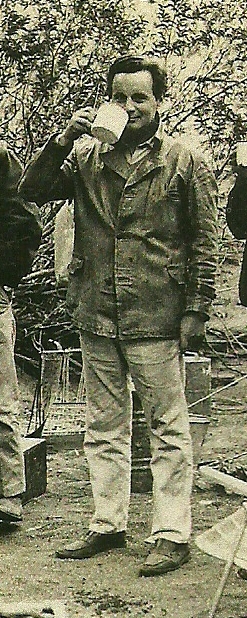José Bonaparte facts for kids
Quick facts for kids
José Bonaparte
|
|
|---|---|

Bonaparte in 1964
|
|
| Born | 14 June 1928 Rosario, Santa Fe, Argentina
|
| Died | 18 February 2020 (aged 91) Mercedes, Buenos Aires, Argentina
|
| Nationality | Argentine |
| Scientific career | |
| Fields | Paleontology |
José Fernando Bonaparte (14 June 1928 – 18 February 2020) was an Argentine paleontologist who discovered a plethora of South American dinosaurs and mentored a new generation of Argentine paleontologists. One of the best-known Argentine paleontologists, he has been described by paleontologist Peter Dodson as "almost singlehandedly ... responsible for Argentina becoming the sixth country in the world in kinds of dinosaurs".
Biography
Bonaparte was the son of an Italian sailor, with no close connection to Napoleon's House of Bonaparte. He was born in Rosario, Santa Fe, Argentina, and grew up in Mercedes, Buenos Aires. Despite a lack of formal training in paleontology, he started collecting fossils with many friends at an early age, and created a museum in their home town. He later became the curator of the National University of Tucumán, where he was named Doctor Honoris causa in 1976, and then in the late 1970s became a senior scientist at the Museo Argentino de Ciencias Naturales in Buenos Aires. Bonaparte was a two-time Guggenheim Fellow and since the 1970s received periodic funding from the National Geographic Society. He was reportedly hard-working, stubborn, and had a strong personality, even violent. He received another honorary degree from the National University of Comahue in 2011. Bonaparte died at dawn in his sleep on 18 February 2020 at age 91.
Career
Discovery of southern diversity
Between 1975 and 1977, Bonaparte worked on excavation of the Saltasaurus dinosaur with Martín Vince and Juan C. Leal at the Estancia "El Brete". This find was in 1977 reported in the scientific literature. With fellow-Argentine Jaime Powell, Bonaparte studied the Saltasaurus and discovered that it had armoured plates, known as osteoderms, embedded in its skin. Based on this discovery, together with twenty examples of Kritosaurus australis and a lambeosaurine dinosaur found in South America, Bonaparte hypothesized that there had been a large-scale migration of species between the Americas at the end of the Mesozoic period.
The supercontinent of Pangea split into Laurasia in the north and Gondwana in the south during the Jurassic. During the Cretaceous, South America pulled away from the rest of Gondwana. The division caused a divergence between the northern biota and the southern biota, and the southern animals appear strange to those used to the more northerly fauna. Bonaparte's finds illustrate this divergence, and caused palaeontologist Robert Bakker to dub him the "Master of the Mesozoic".
Discoveries
Bonaparte discovered an array of Southern dinosaurs that included'
- Abelisaurus comahuensis (1985)
- Agustinia ligabuei (1998)
- Alvarezsaurus calvoi (1991)
- Amargasaurus cazaui (1991)
- Andesaurus delgadoi (1991)
- Argentinosaurus huinculensis (1993)
- Argyrosaurus superbus (1984)
- Carnotaurus sastrei (1985),
- Coloradisaurus brevis (1978)
- Guaibasaurus candelariensis (1998)
- Kritosaurus australis (1984)
- Lapparentosaurus madagascariensis (1986),
- Ligabueino andesi (1996),
- Mussaurus patagonicus (1979)
- Noasaurus leali (1980)
- Piatnitzkysaurus floresi (1979)
- Rayososaurus agrioensis (1996)
- Riojasaurus incertus (1969)
- Saltasaurus loricatus (1980)
- Velocisaurus unicus (1991)
- Volkheimeria chubutensis (1979)
- Ligabuesaurus leanzai (2006)
He also contributed to the discovery of the Giganotosaurus.
Philosophy
Bonaparte was for a long time a traditionalist and did not use modern cladistic methods, which apply the principle of parsimony to a vast array of synapomorphies. Partly for this reason, he declined to work on the modern treatise The Dinosauria, published in 1990. However, in 2000 Bonaparte began to use cladograms. For instance, his studies of sauropods (e.g., Ligabuesaurus) and proto-mammals from Brazil show cladograms made by himself and co-authors. While he is best known for his dinosaur discoveries, he preferred to study the fossils of mammals.
His students included Rodolfo Coria, Luis Chiappe, Fernando Novas, Jaime Powell, Guillermo W. Rougier, Leonardo Salgado, Jorge Calvo, Sebastián Apesteguía and Agustín Martinelli.
See also
 In Spanish: José Fernando Bonaparte para niños
In Spanish: José Fernando Bonaparte para niños

